Integrated Non-Destructive Testing for Assessing Manufacturing Defects in Melt-Fusion Bonded Thermoplastic Composite Pipes
Abstract
1. Introduction
2. Materials and Methods
2.1. Materials
2.2. Characterization
2.3. Defect Quantification
3. Results and Analysis
3.1. Effect of Fibre Volume Fraction on Surface Morphology
3.2. Defect Quantification
3.2.1. Effect of Fibre Orientation and Distribution on Fibre Misalignment
3.2.2. Effect of Characterization Methods on Analyzing Void Distribution
4. Conclusions
- The interlayer between the reinforced and inner layers exhibited good consolidation, although a discontinuity was observed. These microscopy results confirmed that the material had a solid wall construction.
- The XCT dataset revealed the fibre orientation distribution in different axes, with SEM and XCT showing similar orientation patterns. The analysis confirmed that the SEM aligned with the XY axis slice, with predominant fibre orientation around ±45° and ±90° but the placement orientation was deduced to be ±60°.
- Three non-destructive methods, immersion (Archimedes), 2D microscopy, and XCT, were used to estimate void content. All methods were compared, and while they could not provide precise void content values, they offered a comparative approach.
- Archimedes’ density method was applied as an alternative for estimating the void volume fraction. Microscopy involves image processing to estimate void content and size.
- The XCT technique was introduced to detect voids by reconstructing XCT dataset scans. XCT provided 3D visualization of internal structures and allowed for void quantification.
- The analysis revealed that the void content ranged from 0–2.2%, with good agreement between microscopy and Archimedes’ methods.
- However, differences could arise due to manufacturing methods. XCT had the advantage of providing detailed information on void size and location.
- The key finding based on the XCT and microscopy result is that there is an alignment that, at constant volume, increases in void diameter, increases the elongation and directly reduces sphericity.
- Both methods also revealed that most of the voids constitute a minority of the total void fraction. The study also included ultrasonic inspection of the TCP in pristine condition.
Author Contributions
Funding
Institutional Review Board Statement
Informed Consent Statement
Data Availability Statement
Acknowledgments
Conflicts of Interest
References
- Sulu, I.Y.; Temiz, S. Mechanical characterization of composite pipe systems joined using different radii pipes subject to internal pressure. Mech. Based Des. Struct. Mach. 2020, 51, 566–582. [Google Scholar] [CrossRef]
- Yang, B.; Xuan, F.Z.; Wang, Z.; Chen, L.; Lei, H.; Liang, W.; Xiang, Y.; Yang, K. Multi-functional interface sensor with targeted IFSS enhancing, interface monitoring and self-healing of GF or EVA thermoplastic composites. Compos. Sci. Technol. 2018, 167, 86–95. [Google Scholar] [CrossRef]
- Toh, W.; Tan, L.B.; Tse, K.M.; Giam, A.; Raju, K.; Lee, H.P.; Tan, V.B.C. Material characterization of filament-wound composite pipes. Compos. Struct. 2018, 206, 474–483. [Google Scholar] [CrossRef]
- Okolie, O.; Latto, J.; Faisal, N.; Jamieson, H.; Mukherji, A.; Njuguna, J. Manufacturing Defects in Thermoplastic Composite Pipes and Their Effect on the in-situ Performance of Thermoplastic Composite Pipes in Oil and Gas Applications. Appl. Compos. Mater. 2022, 30, 231–306. [Google Scholar] [CrossRef]
- Fu, Y.; Yao, X. A review on manufacturing defects and their detection of fiber reinforced resin matrix composites. Compos. Part C Open Access 2022, 8, 100276. [Google Scholar] [CrossRef]
- Talreja, R. Failure Analysis of Composite Materials with Manufacturing Defects; CRC Press: Boca Raton, FL, USA, 2024. [Google Scholar]
- Ashebir, D.A.; Hendlmeier, A.; Dunn, M.; Arablouei, R.; Lomov, S.V.; Di Pietro, A.; Nikzad, M. Detecting Multi-Scale Defects in Material Extrusion Additive Manufacturing of Fiber-Reinforced Thermoplastic Composites: A Review of Challenges and Advanced Non-Destructive Testing Techniques. Polymers 2024, 16, 2986. [Google Scholar] [CrossRef]
- Mohd Tahir, M.F.; Echtermeyer, A.T. Phased Array Ultrasonic Testing on Thick Glass Fiber Reinforced Thermoplastic Composite Pipe Implementing the Classical Time-Corrected Gain Method. J. Nondestruct. Eval. 2024, 43, 74. [Google Scholar] [CrossRef]
- Ochana, I.; Ducobu, F.; Homrani, M.K.; Notebaert, A.; Demarbaix, A. A Comparative Study of Non-Destructive Testing Techniques: Active Thermography versus Shearography for 3D-Printed Thermoplastic Composites Reinforced with Continuous Carbon Fiber. J. Manuf. Mater. Process. 2024, 8, 227. [Google Scholar] [CrossRef]
- Croft, K.; Lessard, L.; Pasini, D.; Hojjati, M.; Chen, J.; Yousefpour, A. Experimental study of the effect of automated fiber placement induced defects on performance of composite laminates. Compos. Part A Appl. Sci. Manuf. 2011, 42, 484–491. [Google Scholar] [CrossRef]
- Mandell, J.F.; Samborsky, D.D.; Wang, L. Effects of fiber waviness on composites for wind turbine blades. In International SAMPE Symposium and Exhibition; SAMPE: Manhattan, MT, USA, 2003; pp. 2653–2666. [Google Scholar]
- Talreja, R. Incorporating manufacturing defects in damage and failure analysis. In Modeling Damage, Fatigue and Failure of Composite Materials; Woodhead Publishing: Sawston, UK, 2016; pp. 377–390. [Google Scholar]
- Yurgartis, S.W. Measurement of small angle fiber misalignments in continuous fiber composites. Compos. Sci. Technol. 1987, 30, 279–293. [Google Scholar] [CrossRef]
- Little, J.E.; Yuan, X.; Jones, M.I. Characterisation of voids in fibre reinforced composite materials. Ndt E Int. 2012, 46, 122–127. [Google Scholar] [CrossRef]
- Han, Z.; Jeong, S.; Jang, J.W.; Woo, J.H.; Oh, D. Ultrasonic attenuation characteristics of glass-fibre-reinforced polymer hull structure. Appl. Sci. 2021, 11, 6614. [Google Scholar] [CrossRef]
- Saenz-Castillo, D.; Martín, M.I.; Calvo, S.; Rodriguez-Lence, F.; Güemes, A. Effect of processing parameters and void content on mechanical properties and NDI of thermoplastic composites. Compos. Part A Appl. Sci. Manuf. 2019, 121, 308–320. [Google Scholar] [CrossRef]
- Zenker, T.; Bruckner, F.; Drechsler, K. Effects of defects on laminate quality and mechanical performance in thermoplastic Automated Fibre Placement-based process chains. Adv. Manuf. Polym. Compos. Sci. 2019, 5, 184–205. [Google Scholar]
- Mechin, P.Y.; Keryvin, V.; Grandidier, J.C.; Glehen, D. An experimental protocol to measure the parameters affecting the compressive strength of CFRP with a fibre micro-buckling failure criterion. Compos. Struct. 2019, 211, 154–162. [Google Scholar] [CrossRef]
- Bernasconi, A.; Carboni, M.; Ribani, R. On the combined use of Digital Image Correlation and Micro Computed Tomography to measure fibre orientation in short fibre reinforced polymers. Compos. Sci. Technol. 2020, 195, 108182. [Google Scholar] [CrossRef]
- Straumit, I.; Lomov, S.V.; Wevers, M. Quantification of the internal structure and automatic generation of voxel models of textile composites from X-ray computed tomography data. Compos. Part A Appl. Sci. Manuf. 2015, 69, 150–158. [Google Scholar] [CrossRef]
- Nikishkov, Y.; Airoldi, L.; Makeev, A. Measurement of voids in composites by X-ray Computed Tomography. Compos. Sci. Technol. 2013, 89, 89–97. [Google Scholar] [CrossRef]
- Chai, Y. Engineering Design and Void Characterisation of Thick Composites. Master’s thesis, The University of Manchester, Manchester, UK, 2016. [Google Scholar]
- Sensini, A.; Gualandi, C.; Focarete, M.L.; Belcari, J.; Zucchelli, A.; Boyle, L.; Reilly, G.C.; Kao, A.P.; Tozzi, G.; Cristofolini, L. Multiscale hierarchical bioresorbable scaffolds for the regeneration of tendons and ligaments. Biofabrication 2019, 11, 035026. [Google Scholar] [CrossRef]
- Sowmya, H.V.; Ramalingappa Krishnappa, M.; Thippeswamy, B. Degradation of polyethylene by Trichoderma harzianum—SEM, FTIR, and NMR analyses. Environ. Monit. Assess. 2014, 186, 6577–6586. [Google Scholar] [CrossRef]
- Stamopoulos, A.G.; Tserpes, K.I.; Prucha, P.; Vavrik, D. Evaluation of porosity effects on the mechanical properties of carbon fibre-reinforced plastic unidirectional laminates by X-ray computed tomography and mechanical testing. J. Compos. Mater. 2016, 50, 2087–2098. [Google Scholar] [CrossRef]
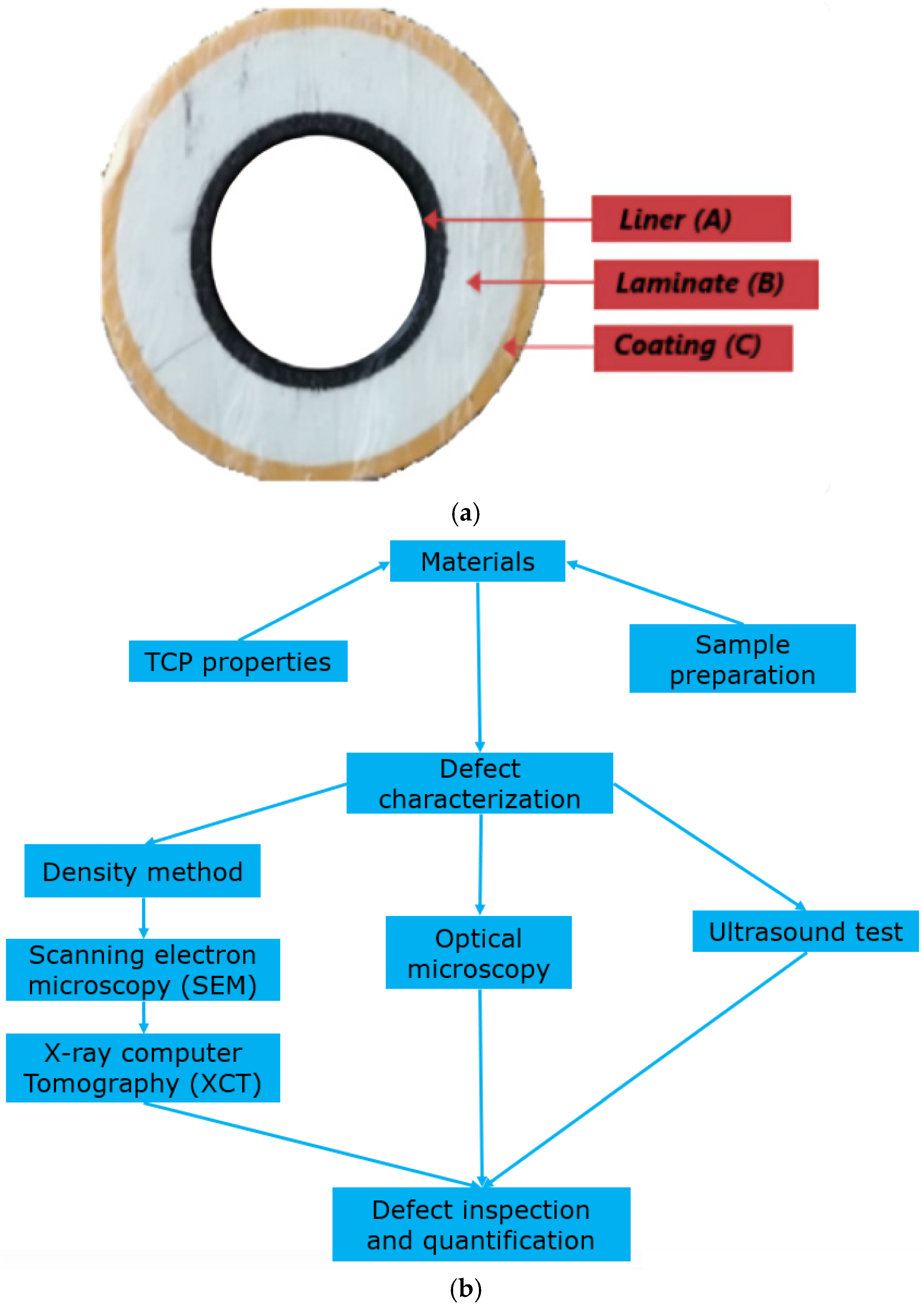
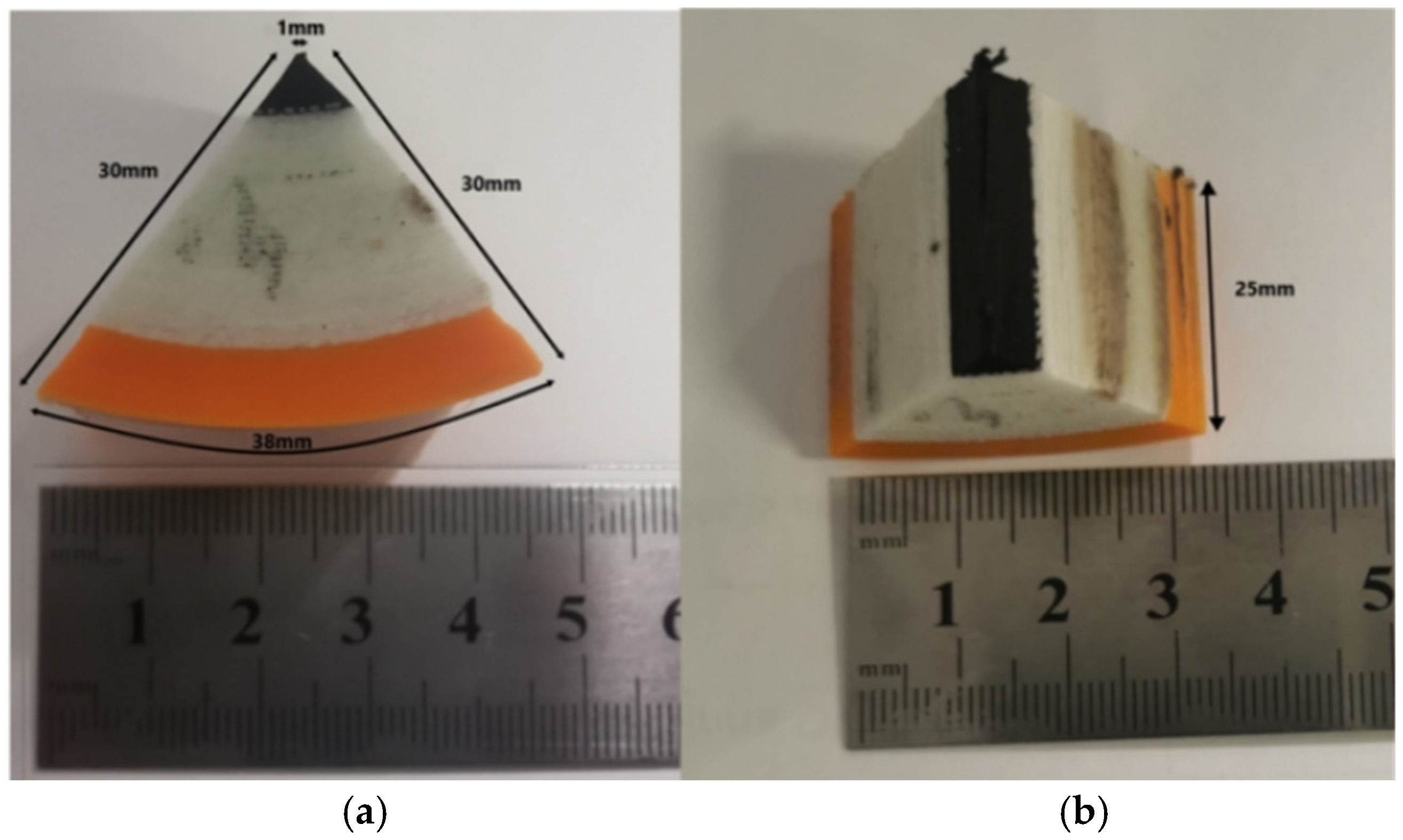
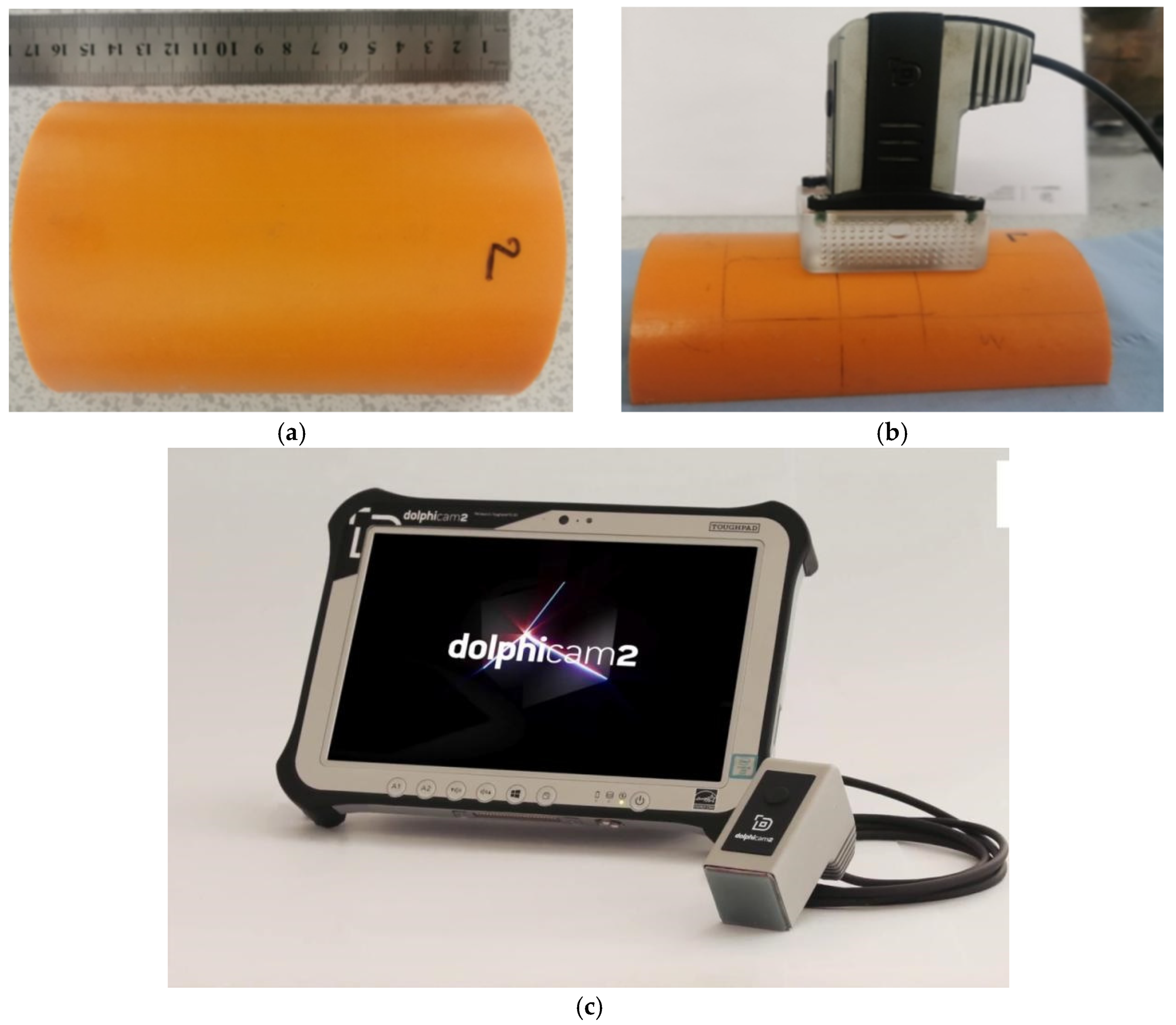
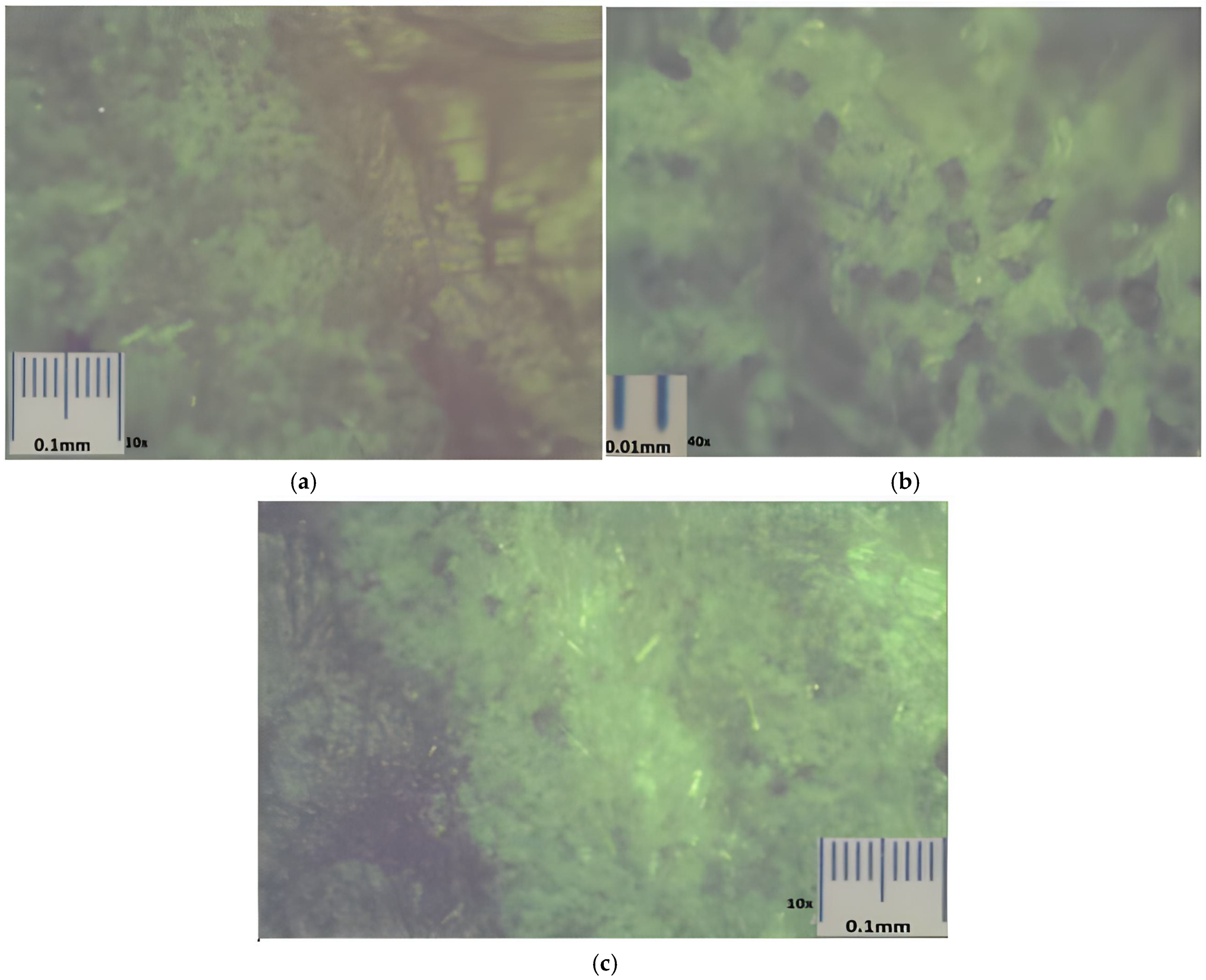
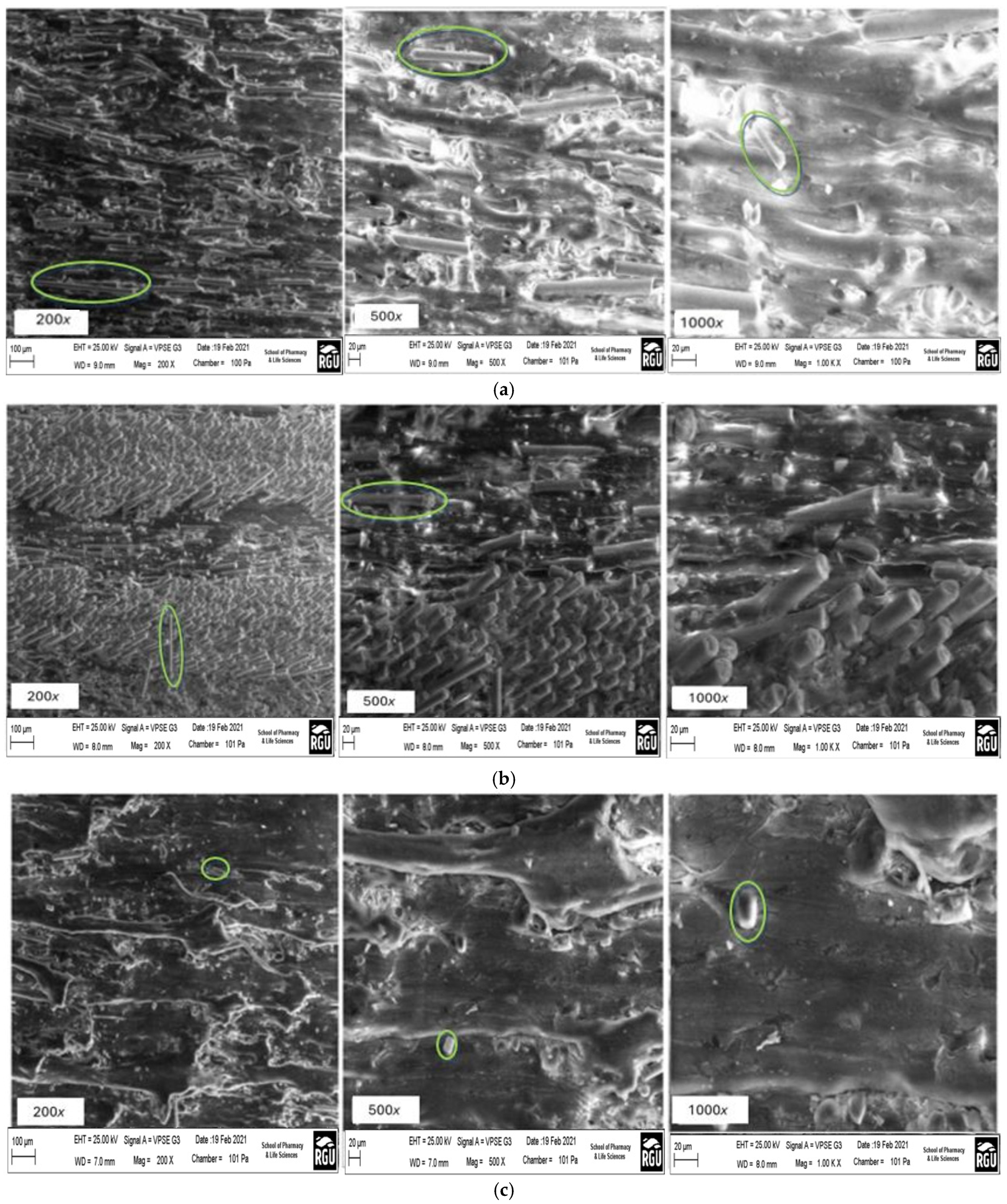
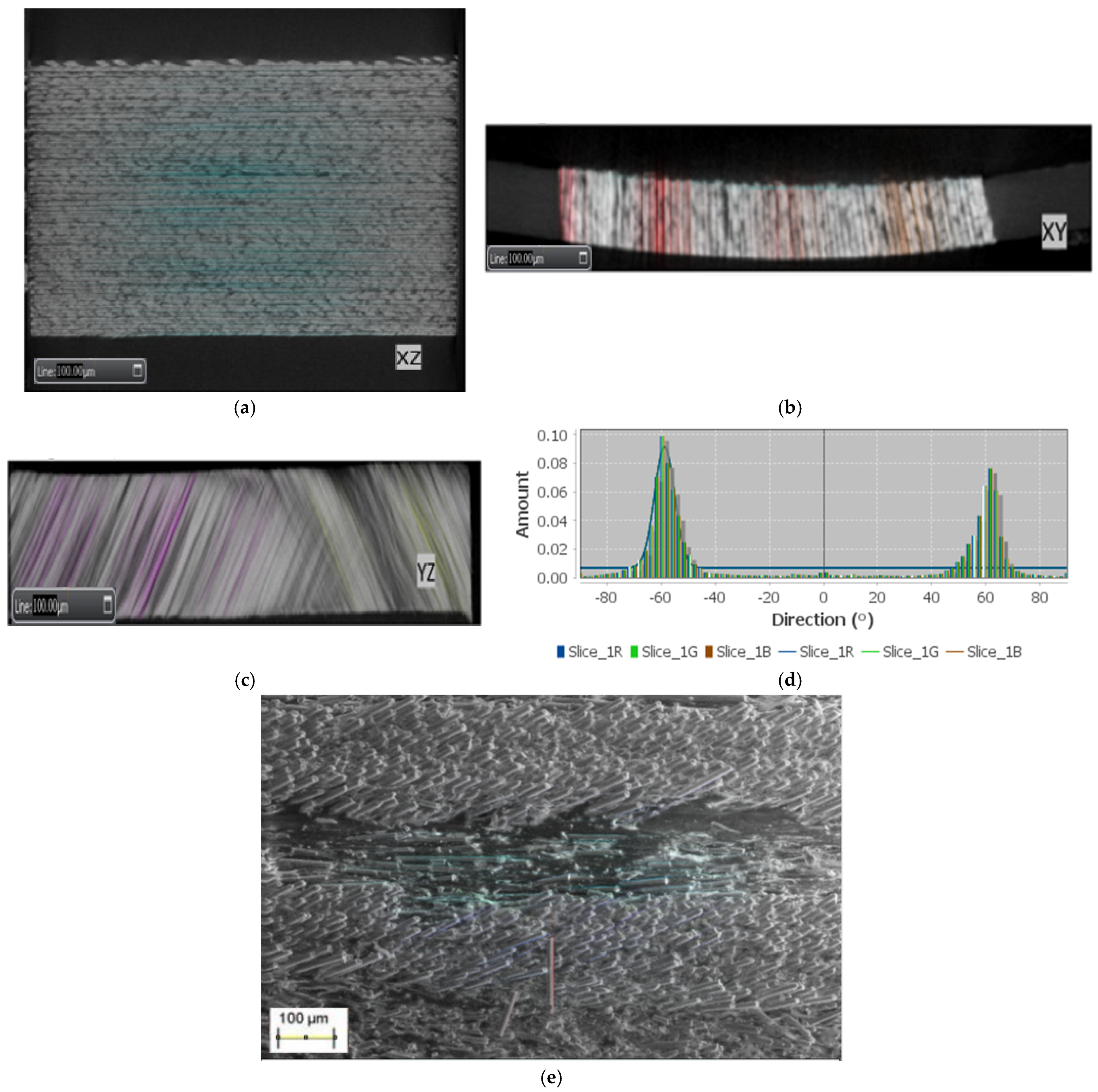

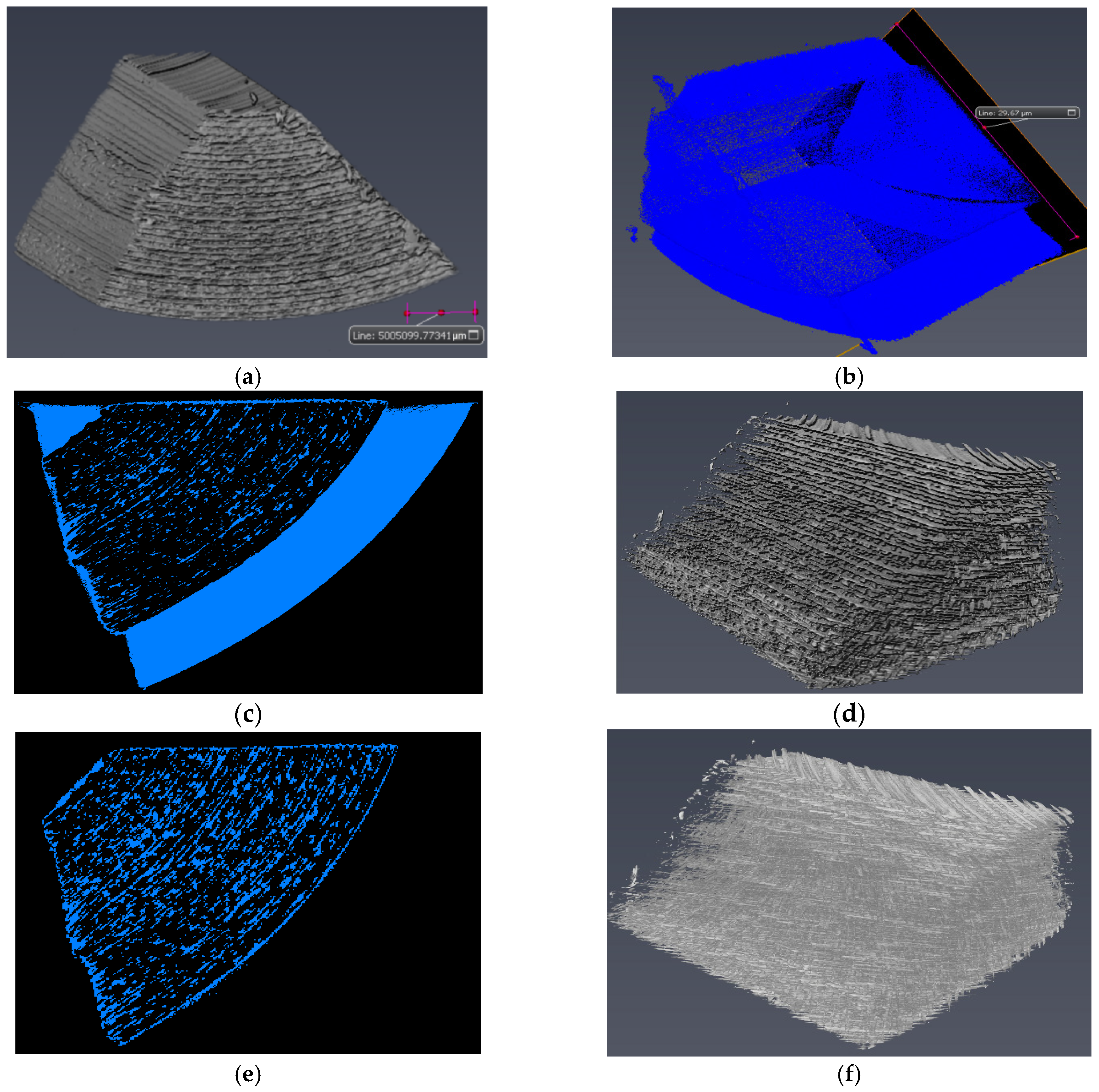
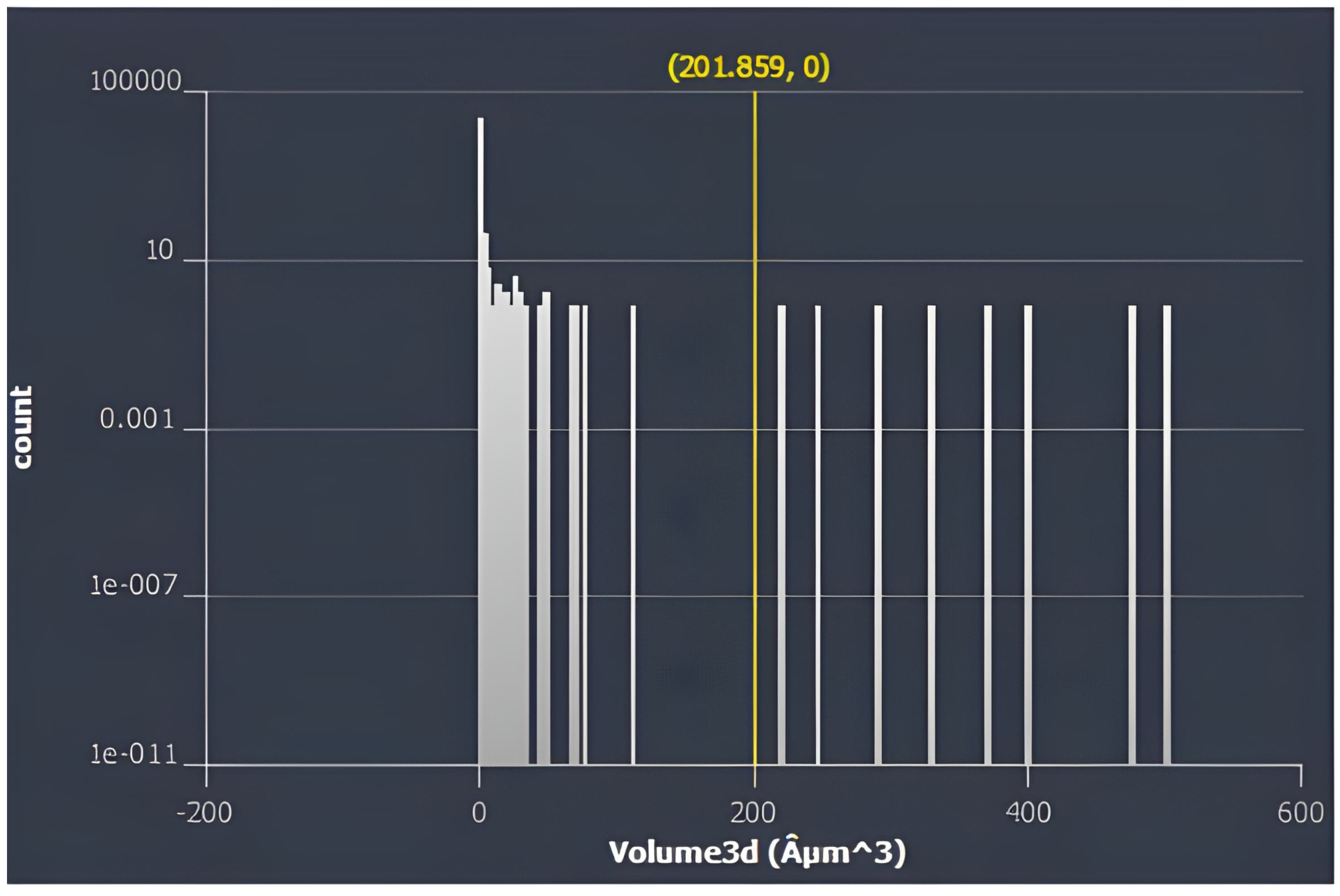
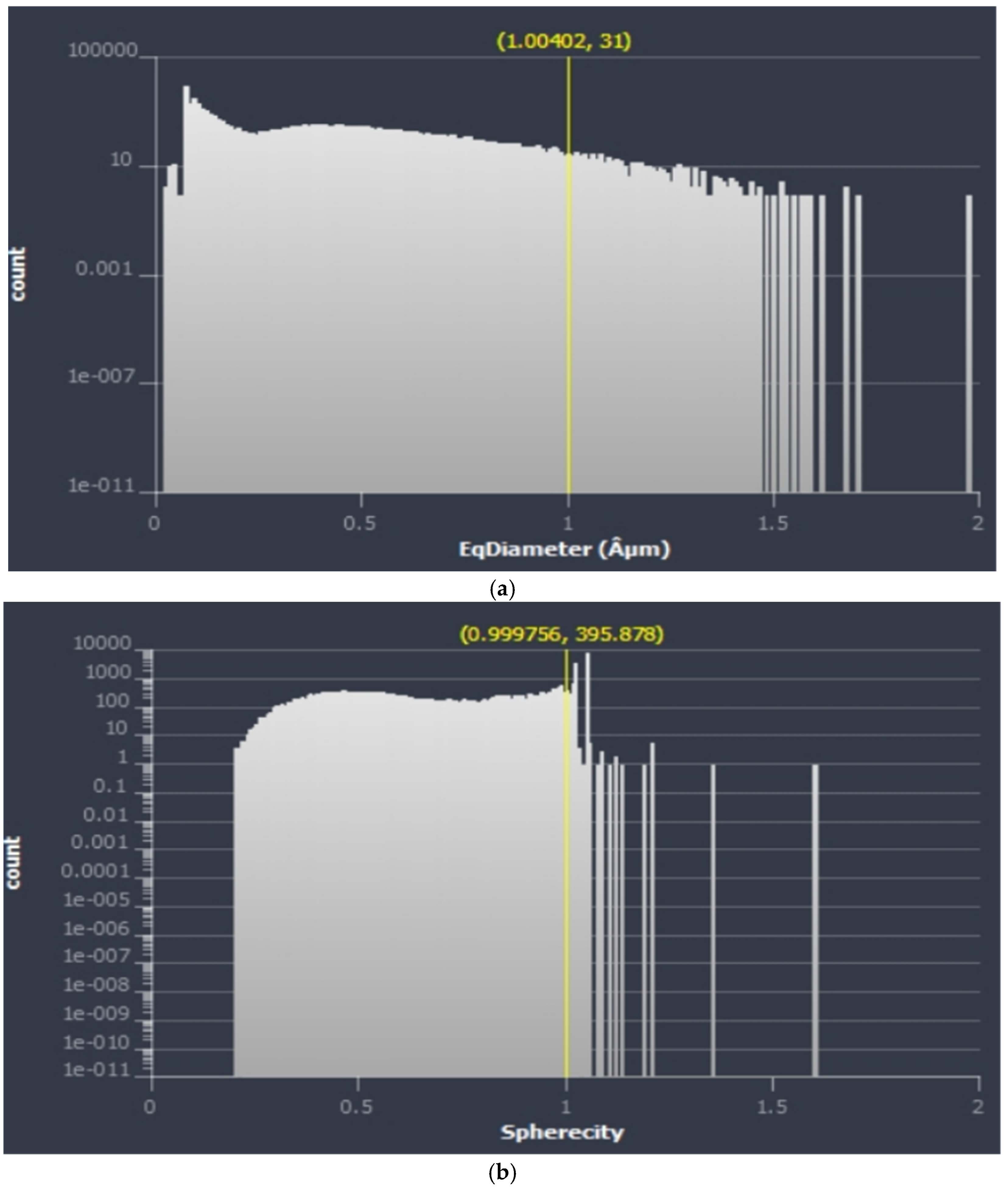
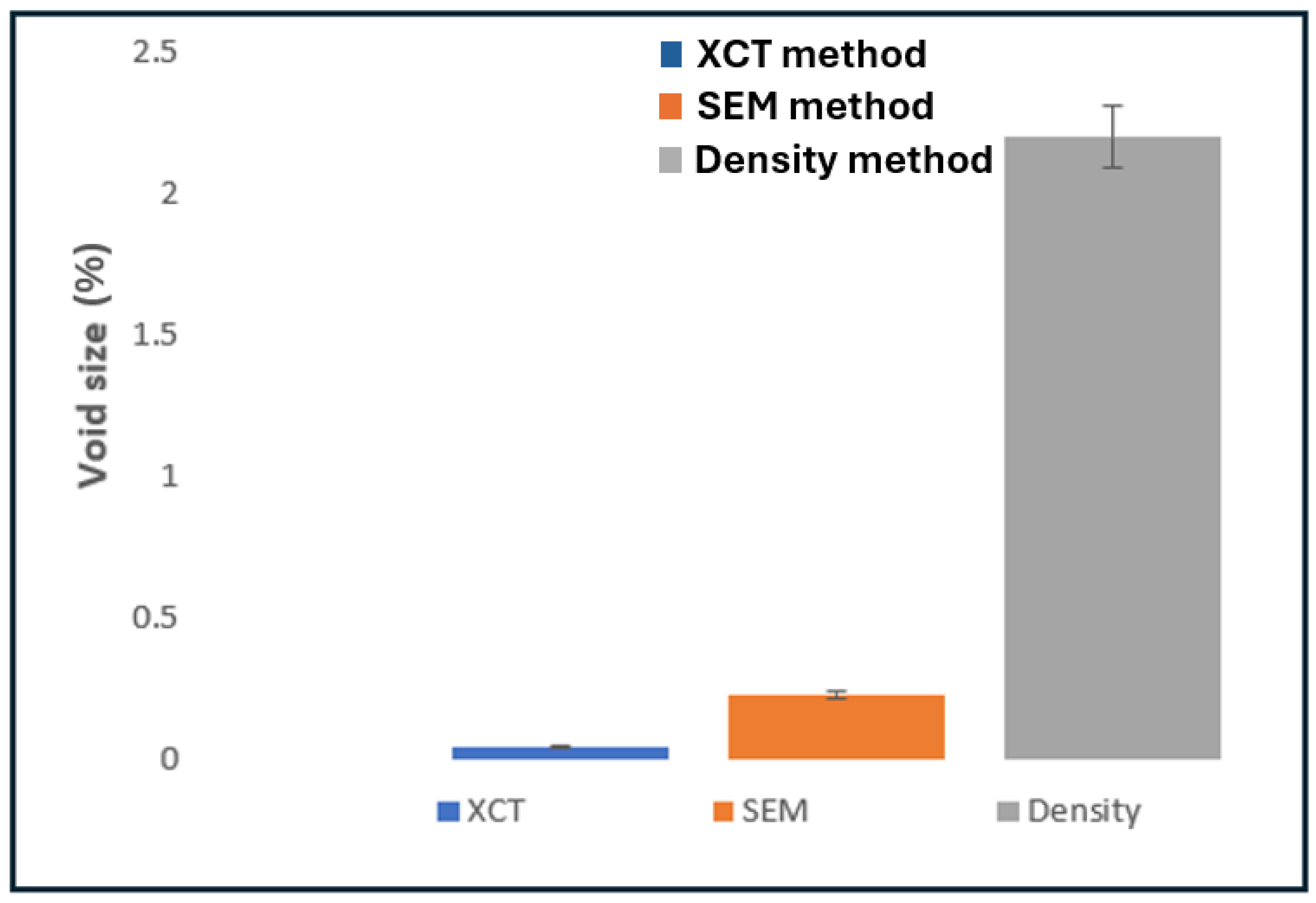
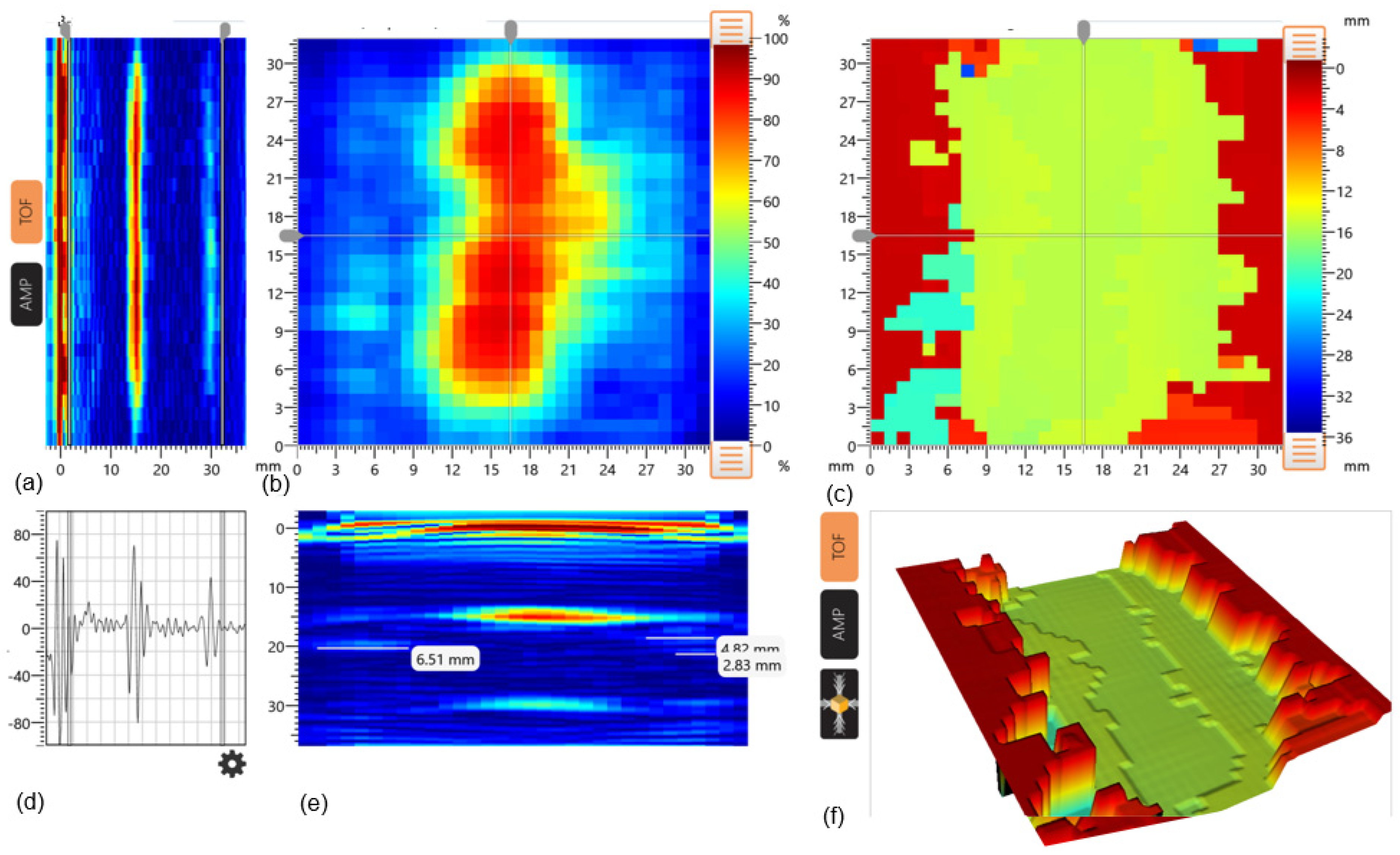
| Sample Location | Voxel Size (μm) | Volume (mm3) | Area Analyzed (mm2) | Volume/Area Analyzed (mm3/mm2) | Pore Volume Fraction (%) | Number of Pores Identified |
|---|---|---|---|---|---|---|
| Whole sample | 0.02 × 0.2 × 0.2 | 14,625 | 2070 | 7.065 | 4.41 × 10−8 | 24,990 |
| Mean Equi-Diameter (μm) | Maximum Equi-Diameter (μm) | Minimum Equi-Diameter (μm) | Mean Sphericity (-) | Maximum Sphericity (-) | Minimum Sphericity (-) |
|---|---|---|---|---|---|
| 0.275 | 1.981 | 0.025 | 0.780 | 1.609 | 0.205 |
Disclaimer/Publisher’s Note: The statements, opinions and data contained in all publications are solely those of the individual author(s) and contributor(s) and not of MDPI and/or the editor(s). MDPI and/or the editor(s) disclaim responsibility for any injury to people or property resulting from any ideas, methods, instructions or products referred to in the content. |
© 2025 by the authors. Licensee MDPI, Basel, Switzerland. This article is an open access article distributed under the terms and conditions of the Creative Commons Attribution (CC BY) license (https://creativecommons.org/licenses/by/4.0/).
Share and Cite
Okolie, O.; Faisal, N.H.; Jamieson, H.; Mukherji, A.; Njuguna, J. Integrated Non-Destructive Testing for Assessing Manufacturing Defects in Melt-Fusion Bonded Thermoplastic Composite Pipes. NDT 2025, 3, 6. https://doi.org/10.3390/ndt3010006
Okolie O, Faisal NH, Jamieson H, Mukherji A, Njuguna J. Integrated Non-Destructive Testing for Assessing Manufacturing Defects in Melt-Fusion Bonded Thermoplastic Composite Pipes. NDT. 2025; 3(1):6. https://doi.org/10.3390/ndt3010006
Chicago/Turabian StyleOkolie, Obinna, Nadimul Haque Faisal, Harvey Jamieson, Arindam Mukherji, and James Njuguna. 2025. "Integrated Non-Destructive Testing for Assessing Manufacturing Defects in Melt-Fusion Bonded Thermoplastic Composite Pipes" NDT 3, no. 1: 6. https://doi.org/10.3390/ndt3010006
APA StyleOkolie, O., Faisal, N. H., Jamieson, H., Mukherji, A., & Njuguna, J. (2025). Integrated Non-Destructive Testing for Assessing Manufacturing Defects in Melt-Fusion Bonded Thermoplastic Composite Pipes. NDT, 3(1), 6. https://doi.org/10.3390/ndt3010006








